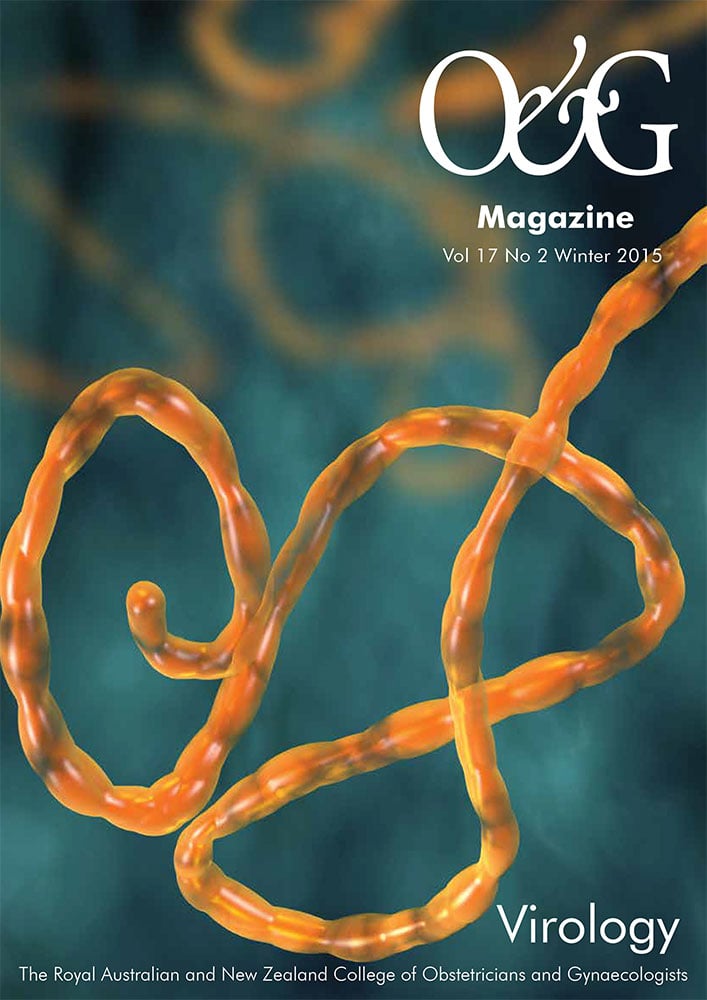In a world of competing demands, healthcare decision-makers must assess vaccination programs, policies and practices by determining their potential healthcare gains relative to their economic costs. Decision-making in healthcare involves both a great deal of uncertainty and substantial consequences. Cost-effectiveness analysis (CEA) is used to evaluate a specific intervention relative to the current practice. Through determining effectiveness, safety and cost, cost-effectiveness research can guide the allocation of scarce resources to achieve the greatest public health gains. By carefully synthesising economic, surveillance and epidemiologic data, CEA provides a scientific framework central to evidence-based public-health practice.
A few ethical challenges arise when considering the field of CEA. First, CEA is a public health science that seeks to maximise health gains relative to economic costs. Social concerns such as prioritising the sick, young and reducing healthcare inequities are not explicitly built into these mathematical models. Therefore, decision-makers must take CEA work together with social and economic factors outside of the model into consideration. Second, CEA is not designed to address limitations of the current practice, nor is it designed to identify misallocation of resources. Therefore, factors outside of the cost-effectiveness model, such as sustainability, must also be considered. Third, CEA is largely economically prohibitive for many low- and middle-income countries (LMIC). This is of particular concern as LMIC typically have the most to gain from cost-effective interventions.1
As a rule, vaccines provide the greatest bang for the public health investment buck. The costs associated with vaccination delivery are a fraction of those attributable to treatment, income loss, disability and death owing to illness and generally provide lifetime protection. Vaccines provide direct medical savings and indirect economic benefits through improved health and increased life expectancy. Even with newer and more expensive vaccines, vaccination remains one of the most cost-effective public health measures.2
However, the World Health Organization (WHO) recommends that every country carefully consider specific costs, logistics, staffing, sustainability and impact of national vaccine programs prior to adoption.3 High-income countries (HIC) historically complete assessment and initiate vaccination rollout prior to LMIC while the impact of these programs are equally, if not more, beneficial for countries with limited public health funds. Additionally, assessments of cost-effectiveness require complex models using data that are often unavailable in many resource-poor settings. Essentially, countries best served by timely vaccination programs are hindered by between-country disparities. Given these challenges, decision-makers in LMIC must carefully consider analytic options.4
Specifically, HPV is responsible for 27 500 premature deaths annually from cervical cancer occurring in adulthood, 85 per cent of which occur in the poorest, low-income countries.5 In many countries cervical cancer is responsible for more deaths than childbirth. HPV vaccination must be administered before sexual debut as it is only effective before the person is infected.
Recently, the WHO convened an expert panel to help guide economic analysts in supporting decisions about HPV vaccination programs in LMIC. The panel developed a series of questions to help decision-makers determine appropriate economic analyses. The first question decision-makers must address is whether to develop a new model, adapt an existing one or not conduct an economic evaluation at all. While developing a new model with country-level data is optimal from an information perspective, the choice to forgo economic evaluation is attractive for resource-limited LMIC. Decision-makers should also give serious consideration to adapting an existing model rather than creating a new one. When key model parameters are stable or easily modified, conducting a new analysis may add little value. For example, research has found the key drivers of cost effectiveness of HPV vaccines in LMIC are: vaccine price, HPV prevalence and uptake of cancer screening and treatment.6 7 Therefore, studies examining similar policy questions in similar settings may be best suited to adapt an existing model.
After addressing the question of whether an economic analysis is needed, the next question is whether analyses should address costs, epidemiological outcomes or both? This choice should be based on a clear policy question. Typically, an analysis will include both epidemiological and economic outcomes and will be presented with multiple audiences in mind. Assuming costs are considered, costing methodology and analytics must be carefully planned. The types of outcomes to be presented must be driven by policy and can range from static models with simple demographic and epidemiological data requirements to dynamic progression models that require complex clinical data.8
Every model includes uncertainty in methodology, structure and input parameters. This uncertainty must be clearly addressed in order to demonstrate the impact of varying particular assumptions. Based on the target audience, decision-makers must determine how best to communicate results of cost-effectiveness models. Simpler models have more uncertainty as a function of limited inputs but are easier to disseminate.9
One example of an existing model that makes good use of available data and that can be used in LMIC, is the Papillomavirus Rapid Interface for Modeling and Economics (PRIME) model developed to assess cost-effectiveness and health effects of vaccination of girls against HPV before sexual debut in terms of burden of cervical cancer and mortality. The WHO Commission on Macroeconomics and Health classified healthcare interventions that cost one to three times the GDP per capita per disability-adjusted life year (DALY) averted as cost-effective and those that cost less than one GDP per capita per DALY averted as very cost-effective.10 The PRIME model found that in all LMIC, except Afghanistan and the Democratic Republic of Congo, HPV vaccination is very cost effective. This global analysis is in agreement with previous research suggesting that HPV vaccination is cost effective in nearly all countries, particularly low-income and low-middle-income countries.11
In summary, HPV vaccination is a solid public health investment. HPV is highly prevalent throughout the world and the greatest gains in decreasing related cancers and death can be achieved in the poorest countries, particularly those without existing HPV vaccination programs. Decision-makers are encouraged to use tools available, such as the PRIME model, to inform HPV vaccination policy – especially in resource-poor settings. In addition, long-term and societal economic benefits of decreased HPV prevalence, outside the scope of cost effectiveness analysis, should be considered.
References
- T. Tan-Torres Edejer, R. Baltussen, T. Adam, R. Hutubessy, A. Acharya, D.B. Evans et al. (2003) Making choices in health WHO guide to cost-effectiveness analysis. Geneva: World Health Organization. Available: www.who.int/choice/publications/p_2003_generalised_cea.pdf (accessed Mar 17, 2015).
- Walker DG, Hutubessy R, Beutels P. WHO guide for standardisation of economic evaluations of immunizations programmes. Vaccine. 2010 Mar 8; 28(11):2356-9. Epub 2009 Jun 28.
- Walker DG, Hutubessy R, Beutels P. WHO guide for standardisation of economic evaluations of immunizations programmes. Vaccine. 2010 Mar 8; 28(11):2356-9. Epub 2009 Jun 28.
- Jit M, Levin C, Brison M, Portonoy A, Hutubessy R. Economic analyses to support decisions about HPV vaccination in low- and middle-income countries: a consensus report and guide for analysts. BMC Med 2013; 11: 23.
- GAVI Alliance. GAVI funds vaccines to protect girls against cervical cancer.www.gavialliance.org/library/news/pressreleases/2013/gavi-funds-vaccines-to-protect-girls-against-cervicalcancer/ (accessed Mar 17, 2015).
- Goldie SJ, O’Shea M, Campos NG, Diaz M, Sweet S, Kim SY: Health and economic outcomes of HPV 16,18 vaccination in 72 GAVI-eligible countries. Vaccine 2008, 26:4080-4093.
- Jit M, Demarteau N, Elbasha E, Ginsberg G, Kim J, Praditsitthikorn N, Sinanovic E, Hutubessy R: Human papillomavirus vaccine introduction in low-income and middle-income countries: guidance on the use of costeffectiveness models. BMC Med 2011, 9:54.
- Jit M, Levin C, Brison M, Portonoy A, Hutubessy R. Economic analyses to support decisions about HPV vaccination in low- and middle-income countries: a consensus report and guide for analysts. BMC Med 2013; 11: 23.
- Jit M, Levin C, Brison M, Portonoy A, Hutubessy R. Economic analyses to support decisions about HPV vaccination in low- and middle-income countries: a consensus report and guide for analysts. BMC Med 2013; 11: 23.
- Walker DG, Hutubessy R, Beutels P. WHO guide for standardisation of economic evaluations of immunizations programmes. Vaccine. 2010 Mar 8; 28(11):2356-9. Epub 2009 Jun 28.
- Jit, M, Brisson M, Portnoy A, Hutubussey R. Cost-effectiveness of female human papillomavirus vaccination in 179 countries: a PRIME modelling study. Lancet Global Health. 2014 Jul;2(7):e406-14.






Leave a Reply